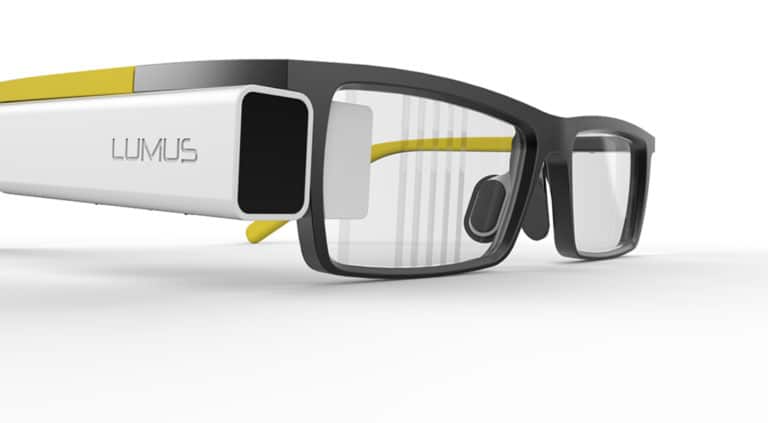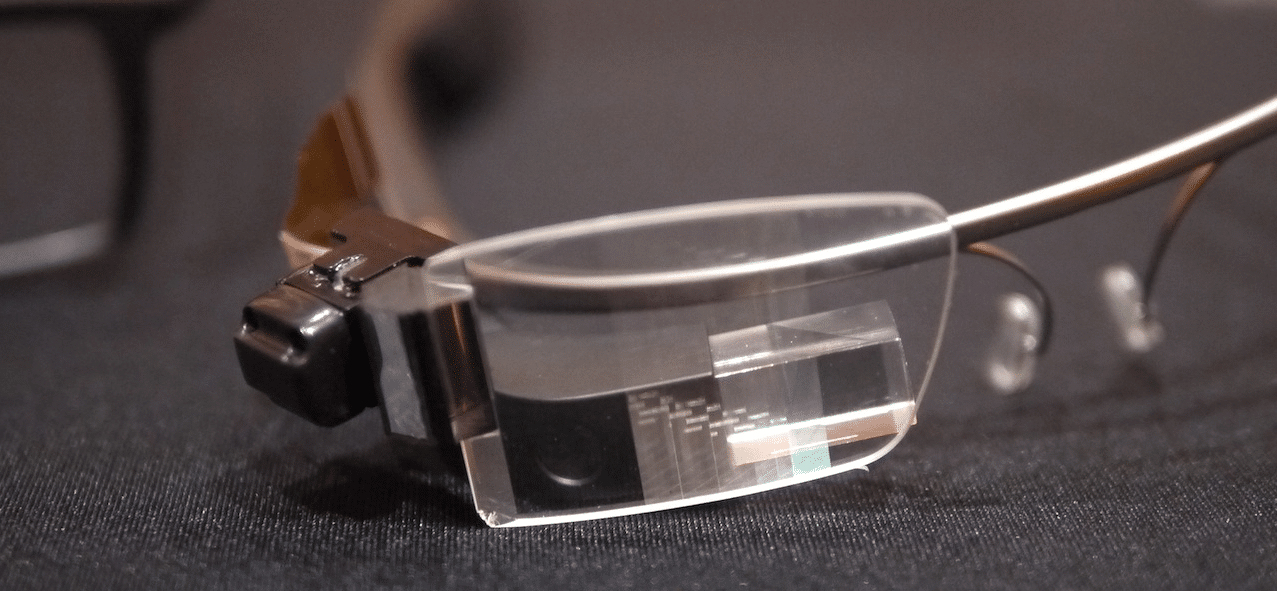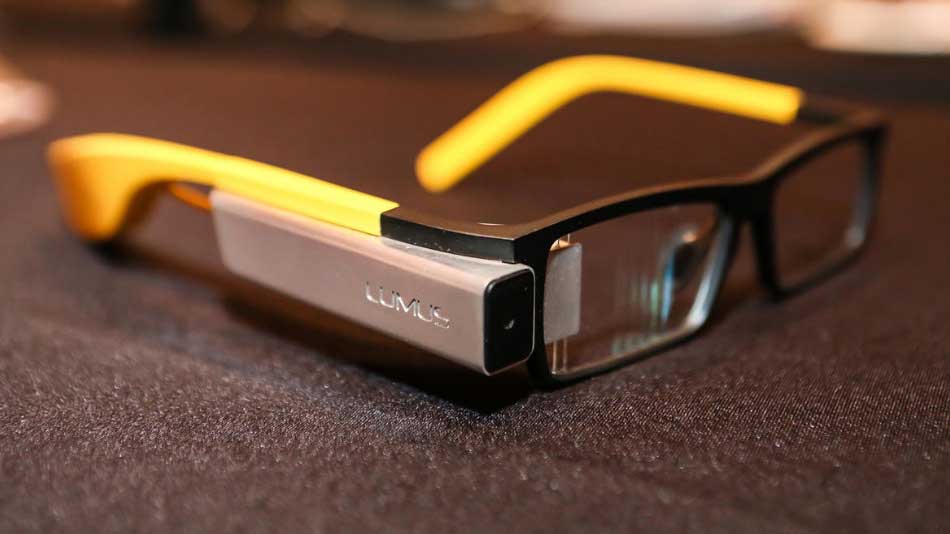
In the tech world, including AR &VR, some companies own or build a large portion of the tech stack (Apple). And some focus on a specific core competency (Intel). Israeli AR optics company Lumus is best characterized by the latter.
And the term focus works on two levels: Lumus’ core product is AR lenses, and a reflective waveguide technology that delivers AR overlays. Though it has a few sets of finished glasses, they are mostly design concepts for the work it does with OEMs to implement waveguides.
It works with Daqri for example, powering the optics of its enterprise-grade smart helmet. For that and other lens implementations, Lumus boasts up to 55 degree field of view (FOV) and sub- two- millimeter thin lenses, which is the highest FOV in the smallest package in the industry.
“In the tradeoff between [FOV] and form factor, we have the best ratio,” Lumus BD lead Sivan Iram told ARtillry. It also boasts the rare feat of brightness levels outdoors — achieved through a series of embedded lens facets (small mirrors) that reflect light projected from the side.

Battle Tested
Similar to Everysight — which also shines outdoors — Lumus is rooted in military technology. It was founded in 2000 by Dr. Yaakov Amitai, who previously built optical systems for military applications. That remains a key business line, making Lumus (literally) battle tested.
Outside of military applications, the company sees long-term opportunity with consumer AR glasses, and nearer-term opportunity in the enterprise. Iram names usual suspects like manufacturing and assembly, but areas like driving and fitness are also on Lumus’ radar.
These areas carry the benefits we’ve examined — especially enterprise — such as a more receptive buyer, improved efficiencies, etc. But for Iram, another factor threads through the above examples: they already wear some form of glasses… so there’s less behavioral change to force.
“It’s just like business men in the late 80’s and early 90’s who were the first cell phone customers,” said Iram. “They already carried briefcases, so to carry the phone inside was relatively low friction.”

Form Before Factor
Otherwise, Lumus is open to broad market opportunity and considers itself somewhat agnostic to verticals and use cases. Iram also interestingly sees room in the market for a wide range of approaches and form factors. And the use case flows from the lens design.
“The form factor leads the use case,” said Iram. “But we also appreciate the fact that there are no silver bullets. Individual optical systems have benefits. What we’re going for is the holy grail of social acceptability [which] would need to be in the form factor of something like eye glasses.”
For the sake of comparison, Meta’s optical framework is making headway for desk work. Its field of view is industry leading, Iram admits. But the form factor is conspicuous and precludes the ability to see the wearer’s eyes, making it suboptimal for use cases that involve social interaction.

Focused Energy
Continuing the theme of broad opportunity, Iram sees the AR future in two ways. There will be a hero device, further from market, including SLAM and other aspirational features. And there will be lower-grade AR and heads-up displays. But they both hold opportunity for Lumus.
“Regardless of what school of thought you are in, you’ll need fantastic optics,” said Iram. “You need it to be transparent, you need it to be socially acceptable, you need it to be high resolution, large field of view. And you need to have the flexibility for different gestures and interfaces.”
As for Lumus’ current business objectives and near-term road map, it want’s to formulate a path to consumer markets, which will require mass production. And that will in turn requires large OEM partnerships which its currently forming and will likely announce at or before CES.
“We’ve been looking at a short list of OEMs, the biggest in the world,” said Iram. “The goal is to be fabless and to focus on being a designer of technology. We’ll license that out to manufacturers to sell themselves. We want to be an enabler.”
For a deeper dive on AR & VR insights, see ARtillry’s new intelligence subscription, and sign up for the free ARtillry Weekly newsletter.
Disclosure: ARtillry has no financial stake in the companies mentioned in this post, nor received payment for its production. Disclosure and ethics policy can be seen here.
Header image credit: Lumus
